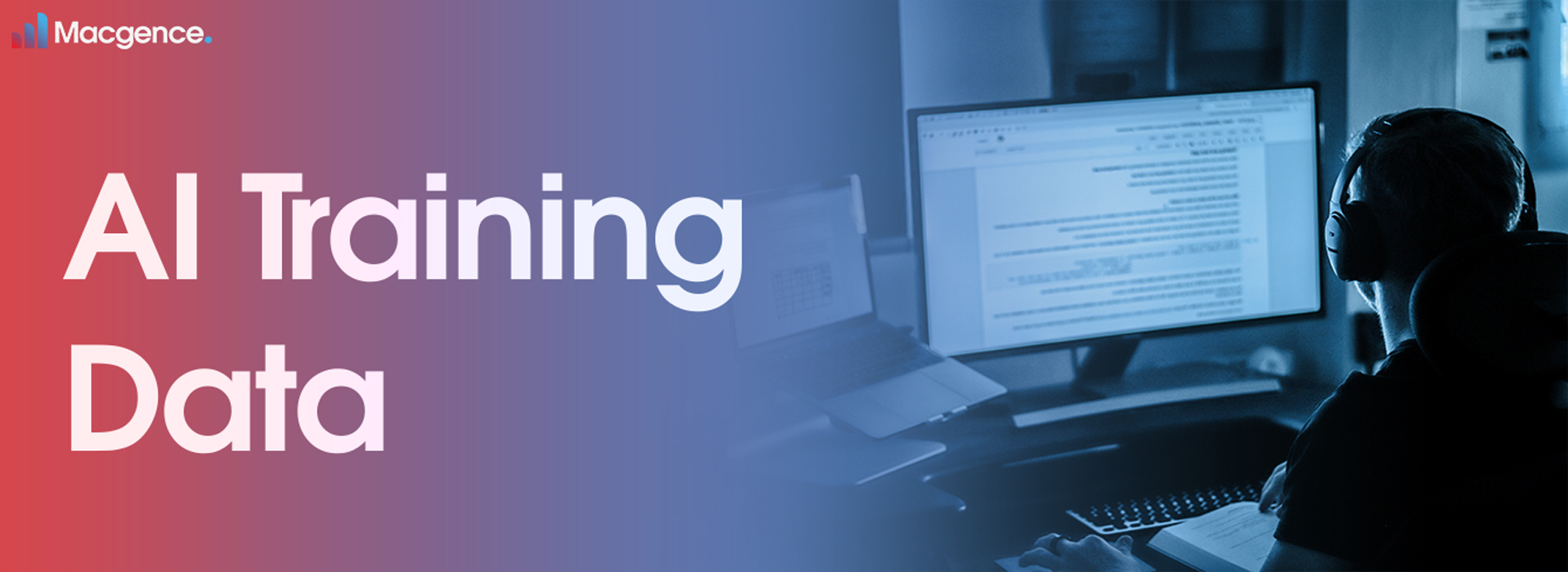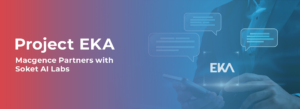The Role of AI Training Data in Machine Learning
Have you ever found yourself asking how Siri provides accurate weather updates? The key lies in AI Training Data’s role in machine learning. High-quality training data allows AI systems to learn patterns, make informed decisions and complete complex tasks more efficiently. In this blog we will discuss different types of training data as well as reveal more on its collection and preparation processes – so let’s discover together all that lies within training data!
Table of Contents
What is AI Training Data?
AI Training Data is the backbone of machine-learning models. It acts as the fuel that helps them learn patterns, make predictions, and carry out tasks. To put it simply, it’s a collection of examples, observations, or inputs that are paired with the correct labels or outputs. It’s what gives the model the knowledge it needs to do its job!
Data for AI training provides the machine learning model with exposure to different situations and patterns, so it can understand and make decisions based on the information. The data is carefully chosen and prepared to resemble real-life situations the model will encounter. It can be in different forms like text, pictures, audio, or numerical data.
Different types of AI Training Data

AI Training Data is incredibly versatile, with various types providing valuable information to help machine learning models grow and develop. Here are some of the more common categories of training data:
- Labeled data: Labeled data is a type of information that includes samples or observations with associated labels or results. For example, when dealing with spam emails, labeled data would include emails identified as either “spam” or “not spam”. This kind of data empowers the model to identify trends and generate forecasts based on known outcomes.
- Unlabeled data: Unlabeled data is data that has not been provided with any labels or outcomes. This type of data is useful for tasks which involve unsupervised learning or clustering, and the goal is to recognise patterns and groups within the data without any external guidance.
- Structured Data: Structured data is clearly organized and formatted in a specific way, typically represented in tabular or relational form. Each data instance is divided into well-defined columns or fields. For instance, examples include spreadsheets or databases. Moreover, structured data is commonly used in tasks like regression, classification, and data analysis.
- Unstructured data: It refers to information that does not possess a particular structure or format. For example, this can include various forms like text and images. Since this type of data lacks a predefined structure, it requires additional steps for processing and analysis. Consequently, to handle unstructured data effectively, techniques like NLP and computer vision are commonly used.
The Significance of Quality Training Data

The importance of having good-quality training data for machine learning cannot be underestimated. Having high-quality training data is essential in guaranteeing the efficiency, precision, and dependability of machine learning models.
Quality training data serves as the foundation upon which models learn and make predictions. It represents real-world scenarios and provides the necessary information for the model to understand patterns and relationships in the data. When the training data accurately reflects the problem the model aims to solve, it increases the chances of the model successfully generalising its learnings to new, unseen data.
One of the key reasons why quality training data is essential is chiefly its impact on model performance. Indeed, models trained on high-quality data are more likely to achieve accurate and reliable predictions. Moreover, the training data guides the model, helping it recognize relevant features, make informed decisions, and avoid overfitting or underfitting.
Another crucial aspect of quality training data is its ability to address biases. Biased data can lead to biased models, thereby perpetuating unfair or discriminatory outcomes. Therefore, ensuring the training data is diverse, representative, and free from biases can significantly minimize the risk of propagating unfairness or discrimination in the model’s predictions.
How to collect and prepare AI Training Data?

Collecting and preparing Training Data requires a thoughtful and systematic approach. Here are some of the most important steps involved:
Identify the data requirements:
Start by understanding the specific needs of your machine learning project. Determine the types of data, such as text, images, or numerical data, that are required to train your model effectively.
Data source selection:
Choose reliable and relevant data sources that align with the desired data requirements. These sources can include existing databases, public datasets, online repositories, or user-generated content.
Data collection:
When collecting data for your project goals, data collection involves gathering relevant examples or observations that align with them through methods like web scraping or manual data entry. It is also essential to consider data privacy concerns when collecting data.
Data preprocessing:
Preprocessing refers to the steps taken to clean and transform the collected data into a suitable format for training. Typically, this may involve removing duplicate entries, handling missing values, normalizing or scaling numerical data, as well as performing text preprocessing tasks like tokenization or stemming.
Data labeling and annotation:
Depending on the task and model requirements, label or annotate the collected data to provide meaningful information to the AI model. This can involve assigning categories or tags, as well as marking regions of interest in images, or adding contextual information.
Splitting the data:
After the data has been gathered and prepped, it is subsequently divided into training, validation, and testing subsets. The training subset is primarily utilized to train the model, while the validation subset is employed to perfect the model’s parameters. Finally, the testing subset is utilized to analyze the ultimate performance of the trained model.
It is essential to keep in mind that the particular steps and their sequence may differ depending on the project, domain, and data requirements. Nevertheless, adhering to these essential steps provides a strong basis for efficiently gathering and preparing AI training data.
Conclusion

In conclusion, training data serves as the foundation for machine learning models, providing the necessary information and patterns for accurate predictions and decision-making. It can include diverse types of data such as text, images, or numerical information. Collecting and preparing AI Training Data involves crucial steps like data source selection, acquisition, preprocessing, labeling, and data splitting. The significance of high-quality training data cannot be overstated, because it ensures model efficiency and performance, and helps address biases. Macgence offers top-quality datasets and comprehensive support, making them a trusted partner in enhancing the role of AI training data sets in machine learning.
Get Started with Macgence
Macgence is a leading provider of top-quality datasets, specialising in curating diverse and relevant data for training machine learning models. Our customized datasets are tailored to meet your specific requirements, therefore ensuring that your AI models receive the necessary information for accurate and effective training. Moreover, with a strong focus on data quality assurance, privacy, and timely delivery, Macgence is committed to empowering your AI initiatives with reliable and secure datasets. Furthermore, our dedicated support team is available to assist you throughout the entire process, thereby making Macgence the trusted partner for enhancing the role of AI training data for machine learning.
Frequently Asked Questions (FAQ’S)
Q1. What is AI training data?
Q2. How is training data collected?
Q3. Can training data and testing data be the same?
Q4. What does training data include?
You Might Like
February 28, 2025
Project EKA – Driving the Future of AI in India
Spread the loveArtificial Intelligence (AI) has long been heralded as the driving force behind global technological revolutions. But what happens when AI isn’t tailored to the needs of its diverse users? Project EKA is answering that question in India. This groundbreaking initiative aims to redefine the AI landscape, bridging the gap between India’s cultural, linguistic, […]
March 7, 2025
What is Data Annotation? And How Can It Help Build Better AI?
Spread the loveIntroduction In the world of digitalised artificial intelligence (AI) and machine learning (ML), data is the core base of innovation. However, raw data alone is not sufficient to train accurate AI models. That’s why data annotation comes forward to resolve this. It is a fundamental process that helps machines to understand and interpret […]
March 6, 2025
Vertical AI Agents: Redefining Business Efficiency and Innovation
Spread the loveThe pace of industry activity is being altered by the evolution of AI technology. Its most recent advancement represents yet another level in Vertical AI systems. This is a cross discipline form of AI strategy that aims to improve automation in decision making and task optimization by heuristically solving all encompassing problems within […]
March 5, 2025
Use of Insurance Data Annotation Services for AI/ML Models
Spread the loveThe integration of artificial intelligence (AI) and machine learning (ML) is rapidly transforming the insurance industry. In order to build reliable AI/ML models, however, thorough data annotation is necessary. Insurance data annotation is a key step in enabling automated systems to read complex insurance documents, identify fraud, and optimize claim processing. If you […]


 Previous Blog
Previous Blog







